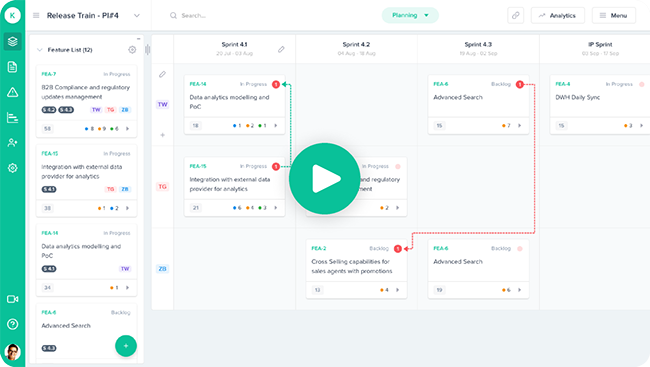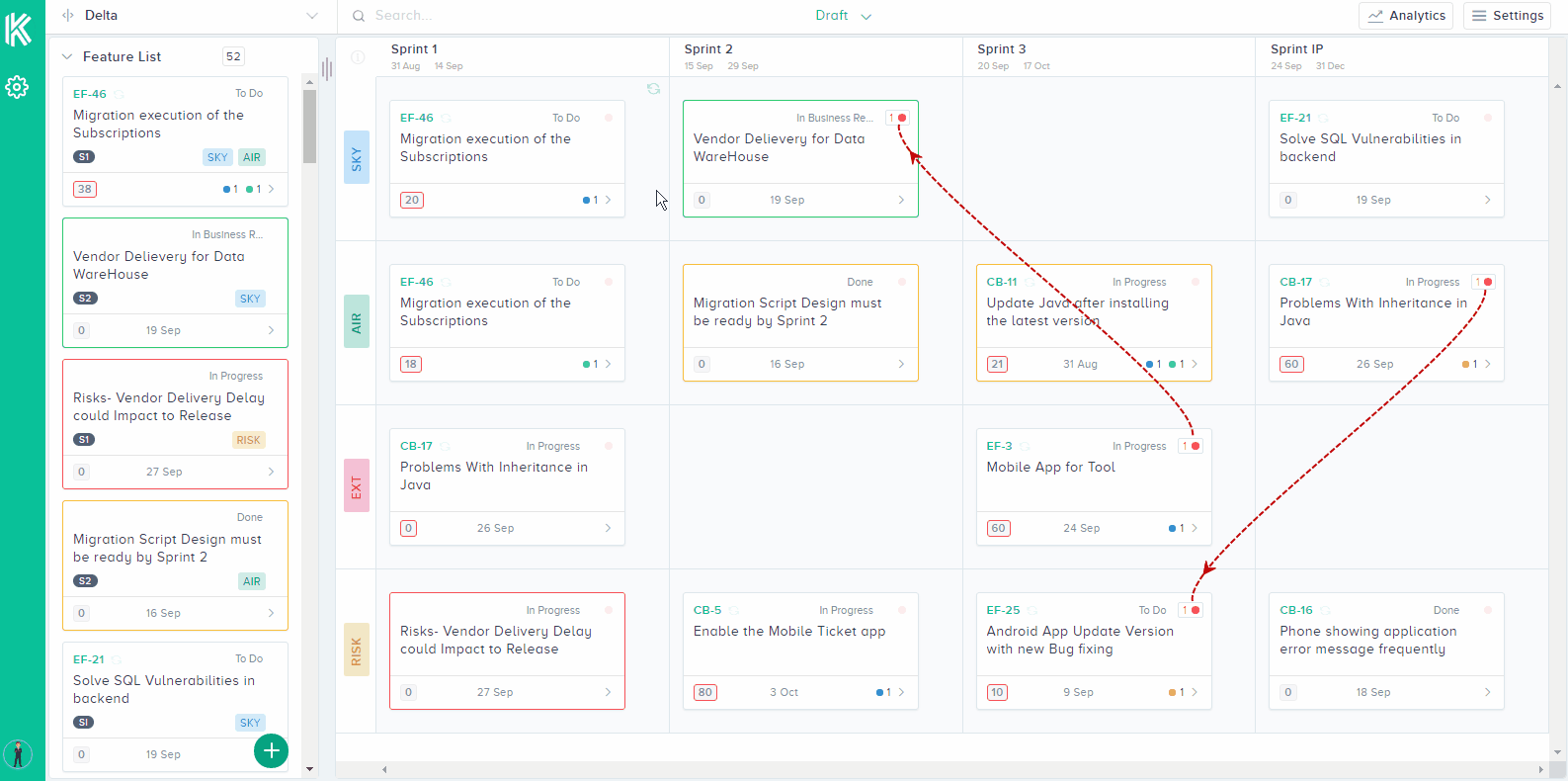Scaled Agile Framework (SAFe) has helped enterprises get a home run every time with its application. Regardless of the company’s domain, with the application of SAFe surely you are set on the path to success.
In this article, you will learn from real-life examples of companies like Standard Bank, Intel and Sony Playstation Network who are truly exceptional in their respective fields, achieved great status with this transformation.
These issues majorly ranged from having no clarity on agile methodologies, coordinating multiple teams and scaling difficulties. These companies understood and realized where they were lacking and with SAFe, they not only found the ideal solution to their problems that were eventually catapulted to success.
Standard Bank
Being in existence for more than 150 years, and with assets of worth $143 billion dollars, it is considered South Africa’s premier bank.
To stay competitively ahead, each year the IT team at Standard Bank sets on doing 600 projects. But due to budget and time constraints, most of the projects were not completed.
The problems that they faced were:
- Difficulties in scaling and coordinating their 2000 IT systems. This affected quality, their responsiveness to market and their overall sustainability.
- Weak team structures.
- Lacking a solid vision.
- True ownership of the work done.
- A change of the culture in the work.
Waterfall and other Lean-Agile Methodologies were tried but they failed to completely confront the problems they were currently enduring. Fortunately, SAFe presented the solution and addressed all the problems that they were facing. It promised a new structure which allowed everything to be easily scaled that would help them build better portfolios, programs, and teams.
The first PI was scheduled in January 2017. Two individuals from Standard Bank attended the SAFe Program Consultant Program and from there they expeditiously trained their employees. From July 2016 till February 2017, more than 1000 employees were trained to SAFe. They were transitioning into a new business model that greatly improved their work.
Cross functional teams were made that were organized into a cadence. Work was broken down into small chunks, being prioritized in the backlog that was delivered in sprints. DevOps and automation were introduced. Frequent feedback was given by IT stakeholders.
In their first PI, Standard bank’s productivity increased by 50% with more than 2000 employees trained on SAFe. Dependencies had become visible which allowed better management. Since transparency was made better, the teams had insight into the entire strategic plan which helped reduce the complexity. Productivity increased by 50 percent while deployments increased to twice a year and cost reduced by 77 percent.
Teams were interacting more with each other with higher energy which produced better ideas. Communication significantly enhanced amongst senior and junior employees. Employees started to dress more casually rather than wearing suits. SAFe had in fact kick ushered in a fresh approach; a new way to perceive how things were meant to be done.
Intel
Intel. A company that has been synonymous with hardware and technology for long as anyone can remember. According to Forbes, as reported in June 2018, Intel had sales of $64 billion. It employs 100,000 globally every year and is geared towards continuously innovating and expanding. With a company of this magnitude, they have had their share of difficulties such as:
- Processes were not defined
- Difficulties in scaling and coordinating growing teams
- Strict management that was more about dictating what needs to be done
- Weak team structure
- Lack of a learning environment
They sought to apply agile methodologies to improve their organizational structure.
The Manufacturing Development Organization (MDO) is responsible for releasing over 2 million lines of code every two weeks which needs to be validated. And given their current strict mode of management system, a change was definitely needed.
In 2005, Lean-Agile methodologies were introduced and with time till 2012 they had made their own recipe for Agile having a mix of various methodologies. This homemade solution was starting to create difficulties in scaling as the MDO was growing. This is where SAFe donned upon them.
A year later in 2013, MDO discovered how SAFe can tackle the problems that they faced. SAFe showed how it can improve their company’s structure with properly defining their roles that would help execute processes efficiently, building an environment of constant learning and proper planning.
The journey of shifting to SAFe began when a team of 15 individuals attended SAFe’s Program Consultant Certification training session. In this session, the employees from Intel learned about role mapping, principles and practices of SAFe.
Under their leadership, more than 1500 people were trained within 8 weeks for the first Agile Release Train (ART). This ART had 170 scrum teams which were fully cross-functional and committed to achieving their goals.
Cadence and synchronization helped coordinate and keep all the tasks in a rhythm in the ART. Intel had a digitized program board that allowed the teams to see all the work that was being done. Issues were now clearly identified that also enhanced transparency. The environment of the workplace changed. Rather than having tasks dictated, the teams communicated more and became conscious about helping their team members.
With SAFe, the teams were quick to adapt to change. In 2017, a new group called Manufacturing Value Engineering was formed that doubled the size of the organization. 2000 were added to 440 scrum teams into 35 ARTs Agile Release Train. This group managed to successfully deliver 65% more product variants in a year.
Sony PlayStation Network
Sony PlayStation Network is one of the pioneers of modern console gaming. It has been in existence for more than 20 years with 150 million active users globally and an integral part of every child’s life growing up in the 90s.
Similar to the companies mentioned in this article, Sony at the time faced the following issues:
- Poor coordination and alignment of teams. There were more than a 1000 team members that were spread across 8 different cities from Tokyo to San Diego. This resulted in not being able to roll out releases on time.
- Struggling to map the dependencies
- Failing to prioritize the features
- Inability to scale
Waterfall and scrum were tried but ended in failure. Managing remote teams still persisted. Finally, in 2014, SAFe was unearthed. It had all the answers they needed for their enterprise. It showed the way for a greater organizational structure and clear dependency mapping.
So in February 2014, the first Agile Release Train departed followed by another after every two weeks. The roles of Program managers changed to Release Train Engineers. Feedback and demos became more frequent. Not to forget, managing teams became effortless. Their open communication and coordination significantly boosted results. Dependencies had now become clear and transparent to all which improved predictability.
More value was being delivered with 700 members that were spread across 60 scrum teams and 6 ARTs. Sony PlayStation network hugely benefited from this transition as they saved $30 million in one year.
Conclusion
Making a transformation takes time, proper guidance and patience.
Agile is centered at the roots of an organization. No matter how big or small, the foundation for agile should be strong to support its methodologies. So having clarity on how everything is meant to behave and work in agile is extremely important.
Agile coaches play a mammoth role in bringing about a change. The experiences shared by agile coaches are an excellent source for the employees to learn and relate from. Their services can be easily tailored around an enterprise to suit the company’s requirements. They help unlock the true potential of a company to attain peak performance.
And lastly, coupled with steadfastness and perseverance, the entire process of a company’s transition can be made smooth.
About Kendis
Digital boards to manage dependencies, multiple teams and program increments for scaling agile initiatives. Kendis works on top of JIRA and other agile tools, your teams can keep on working with their existing JIRA boards and program level and above is planned and managed at Kendis.
Try out 10 days free trial or book a demo with our product expert.
Kendis is a digital solution for PI, Tribe and Big room Planning that works on top of Jira and Azure Boards.











